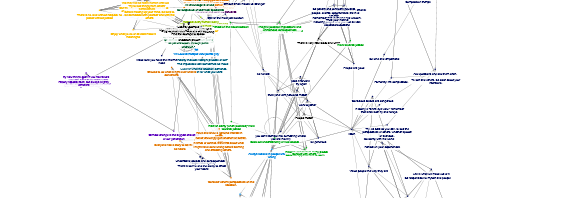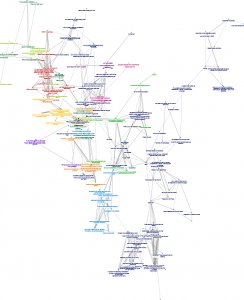Bernie Sanders and Donald Trump have almost nothing in common, except that each campaign is now struggling with its respective party over the rules for selecting and binding delegates. Google News finds these recent headlines: “Trump backers: ‘There will be war’ over disputed delegates,” “Superdelegate system favors Hillary Clinton, say Bernie Sanders voters”–and more than 100,000 more.
Many people will take a side in this argument depending on who they want to win the nomination. They don’t necessarily have an opinion about parties in general. But some Sanders and Trump voters may believe–as a general principle–that the major parties should play very limited roles. That stance is consistent with other aspects of their candidates’ general worldviews. In that case, they will have principled (not merely tactical) reasons to want to strip the parties of discretion.
There are at least two general and current theories of political parties in the US.
On the older view, a party is an association in civil society. It is entitled to organize itself according to its own rules, and people will join if they agree or can stay away if they don’t. Like all associations, a party should consider rules that empower its leaders and core members over casual participants. For one thing, associations want to reward dedicated service. One reason that Democrats have Superdelegates is to make sure that their most devoted members–the ones who have given lots of time to the party itself–can attend and vote at the Convention. Second, like other associations, a party can select individuals to be trustees of its long-term interests. In acting as trustees, the leaders are empowered to check majorities to protect what they consider the best interests of the association. So Republican Rules Committee members who block Trump can argue that they are protecting the GOP.
On the newer view, the parties simply manage the first stage of a two-stage electoral process. In the US, we could use nonpartisan general elections in which all qualified candidates appeared together on the ballot. But then, in most elections, no one would get a majority, and we’d either have to organize a run-off election for the two top vote-getters or allow a person with well under 50% of the vote to take office. Instead, we structure elections so that people first have to compete within one party, and then the parties’ nominees square off in November, producing (usually) a clear winner. Insofar as this is simply a mechanism for organizing a two-stage election, the parties are responsible to the whole public for managing an open, equitable process. The candidate with the most primary votes should always win each party’s primary, and probably the primary should be open to anyone regardless of party registration. That allows any citizen to exercise an equal right to vote in a two-stage election.
Note that the second theory would be appealing to anyone who holds the view of the American Framers or French republican revolutionaries–that parties are odious factions that shouldn’t really exist at all. If parties evolve into highly regulated means for managing two-stage elections, they will cease to be factions, in the bad sense. But then it would be odd that in addition to managing one stage of our election system, they are also expected to campaign for candidates and issues.
The theory of parties as voluntary associations sustained a heavy–and well-deserved–blow when the Supreme Court made a series of rulings against discriminatory practices within the Democratic Party. The Texas party, for instance, had restricted primary voting to whites on the basis that it was a private association devoted to white supremacy. Thurgood Marshall argued successfully against that rule in Smith v Allwright (1944), in which the Court found:
The United States is a constitutional democracy. Its organic law grants to all citizens a right to participate in the choice of elected officials without restriction by any state because of race. This grant to the people of the opportunity for choice is not to be nullified by a state through casting its electoral process in a form which permits a private organization to practice racial discrimination in the election.
That was only one of a long series of cases, and I am not well informed about all the constitutional issues. However, I think that Smith v Allright is consistent with both theories of parties that I outlined above. One reading of the case is that parties are private associations that can make their own rules; they just cannot discriminate on the basis of race (or other constitutionally relevant characteristics that may arise in other cases). An alternative reading is that the parties now fulfill a state function in our “constitutional democracy,” and they must fully honor the equal rights of all voters. Then any rule or practice that stands in the way of open primaries and majority rule would be unconstitutional.
The courts have not gone so far as reach that second conclusion. What we have in practice is a hybrid. Parties are voluntary associations in civil society that are allowed to protect their own interests and favor their core members. Yet they are seen as performing an essential function for the democracy as a whole and must honor democratic principles. That means there is room for constant debate about party rules, and the disagreement is not just about who should be nominated but also about what kind of thing a party should be.
See also my article from last week, “The waning influence of American political parties,” in The Conversation and in US News.

 I like to ask people to state their own beliefs that are relevant to ethics and then draw connections among those ideas to create networks that represent their moral worldviews. I put people (students and others) in dialogue with each other, invite them to explain their networks to peers, and watch connections form.
I like to ask people to state their own beliefs that are relevant to ethics and then draw connections among those ideas to create networks that represent their moral worldviews. I put people (students and others) in dialogue with each other, invite them to explain their networks to peers, and watch connections form.


